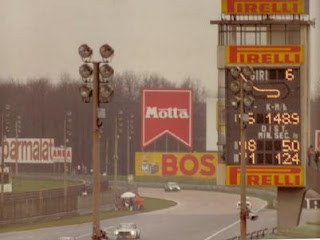 I was lucky
enough to sample the new Audi RS4 Avant not long ago, and as it is only a few
months since I also had the S6 Avant to try out (see my blog entry here), I
thought there was some merit in comparing the two. Although both will set you back in
excess of £50,000, depending how you choose the optional extras, the basic cars are similarly priced, and both fall
roughly into the same category of ‘performance family estate car’. Certainly
both have comparable luggage-carrying capacity: although it should be noted
that the S6 offers 565 litres of space, whereas the RS4 only provides 490
litres. In practical terms, that means that while both would comfortably
accommodate a family of four and the associated stuff required for a week away,
the S6 would be more suitable for those with a third child, or who are
contemplating a two week holiday with camping paraphernalia or the like.
I was lucky
enough to sample the new Audi RS4 Avant not long ago, and as it is only a few
months since I also had the S6 Avant to try out (see my blog entry here), I
thought there was some merit in comparing the two. Although both will set you back in
excess of £50,000, depending how you choose the optional extras, the basic cars are similarly priced, and both fall
roughly into the same category of ‘performance family estate car’. Certainly
both have comparable luggage-carrying capacity: although it should be noted
that the S6 offers 565 litres of space, whereas the RS4 only provides 490
litres. In practical terms, that means that while both would comfortably
accommodate a family of four and the associated stuff required for a week away,
the S6 would be more suitable for those with a third child, or who are
contemplating a two week holiday with camping paraphernalia or the like.
In price and
function, the two cars are therefore similar – or at least in the same
ballpark. Both have V8 engines providing more than 400bhp. But although the S6
gives 414PS (408bhp) from its twin-turbo, 4.0 litre engine, the RS4 simply
blows the larger car away with a staggering 450PS (444bhp) from its 4.2 litre
normally-aspirated version.
With
lightweight technology being a key element in Audi’s marketing strategy these
days, it is also pertinent to note that the RS4 is 155kg lighter than the S6,
giving it a nearly 20% better power to weight ratio. And, oh boy, that is
something that you notice!
Driving the
S6 Avant left one thinking: “it’s a lovely car, but can I really afford it?”
but the RS4 is far more addictive: “I need to buy one of these, how can I
afford it!”
It is a car
that demands to be stretched, to be hurried along, even if there is no hurry.
Even when you can see the next traffic light ahead is red, the temptation is to
always be there first, apart from anything else, because you can. In many ways,
it is more like a high-performance sports car than a family estate. When I took
my 12-year-old son to his cycling club, the bike went easily into the boot, but
as I drove there, I quite simply forgot what I was doing, and found myself
pushing the car through the corners, accelerating through medium-speed curves
with enthusiasm that had us both grinning foolishly.
Then there
are the “impressive engine acoustics”, as it says in the brochure. The V8
bellows out without the constraint of turbo-charger. Subtle it isn’t, but it is
rather good.
I am
reasonably used to the S-tronic gearbox, and in dynamic mode it enables the
enhanced acoustics as well as providing the optimum gear for fast acceleration
– obviously at the expense of fuel consumption. But it really doesn’t matter.
Getting good fuel consumption is not the point of the RS4 Avant. Rather like Billy
Whizz from “The Beano”, the point is to travel quickly, not to arrive sooner.
It may mean you end up a bit red in the face, but why not? It’s worth it.
 |
| Look forward to a lot of visits to the pumps! |
 Overall, this is a remarkable car - yes, it is expensive, but it does do everything extremely well. I've been lucky enough to drive an R8 on more than one occasion, and it is a very wonderful car, but totally impractical. When I drove the RS5 last year, I was impressed - it's a proper wolf 'in sheep's clothing'. But there's something about the estate, which makes the disguise even better!
Overall, this is a remarkable car - yes, it is expensive, but it does do everything extremely well. I've been lucky enough to drive an R8 on more than one occasion, and it is a very wonderful car, but totally impractical. When I drove the RS5 last year, I was impressed - it's a proper wolf 'in sheep's clothing'. But there's something about the estate, which makes the disguise even better! I see that this month's Motor Sport contains a test of the RS6 Avant , but unless you have the extra £15,000 burning a hole in your pocket, I don't see how it could be that much better.
>










